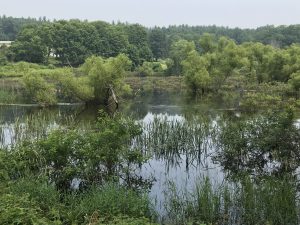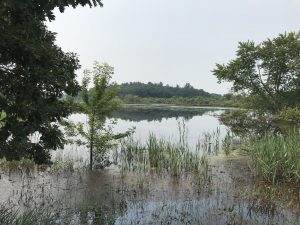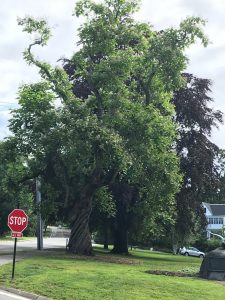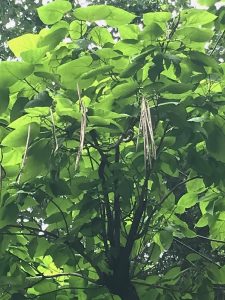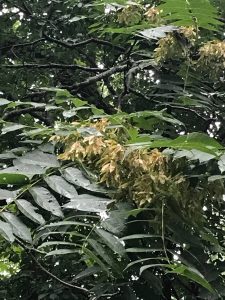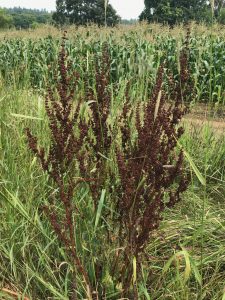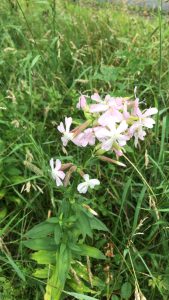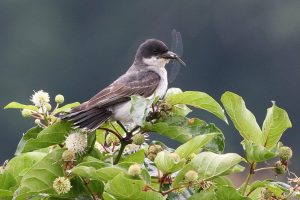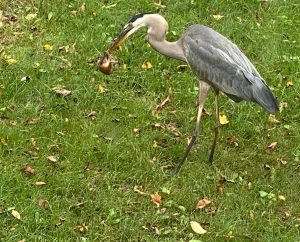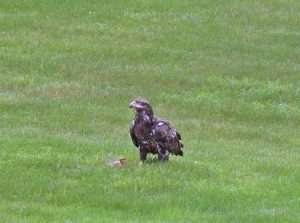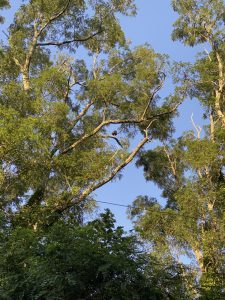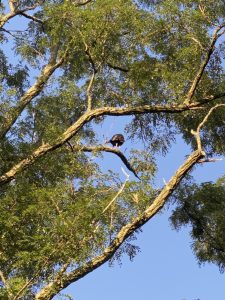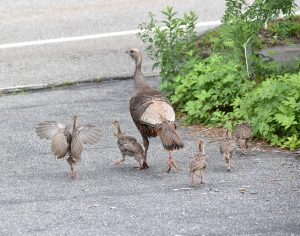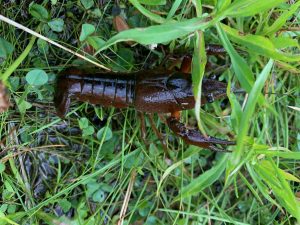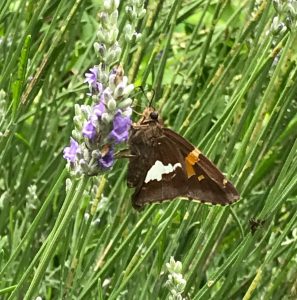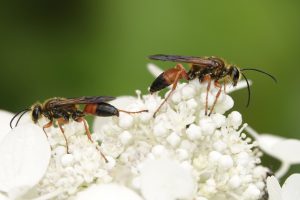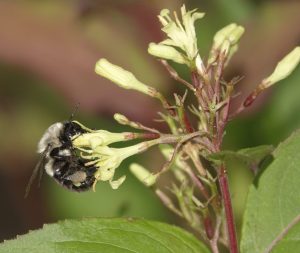Written by Gwyn Loud for the Lincoln Land Conservation Trust. She welcomes your sightings and questions at 781-259-8690 or gwynloud555@gmail.com. This column will resume in September.
Climate change is very visible, with weather records breaking this summer. According to the National Weather Service, Boston had the hottest June since records began in 1872, with nine days of high temperatures over 90℉, including a five-day heat wave at the start of the month and a three-day heat wave at the end, including a day when record highs were broken with 100℉. But then came July, including a damp and chilly 4th of July weekend, with a high on July 3 of only 59℉ followed by seemingly endless days of rain. As of mid-month we have had over nine inches of rain, making this the third wettest July on record, with half the month still to go. Our drought worries from May seem like distant memories; it’s too bad we cannot give some of our rain to the western USA, which is suffering from alarming drought. Here, ponds are full, streams are rushing and plants which like lots of moisture, such as fungi, are thriving. Other plants, such as my tomatoes, could use more sun!
The bright early green of spring trees has given way to the deeper greens of mid-summer. Catalpa trees, some flowering earlier than others, are now producing long bean-like seed pods. Our beloved “Twisted Tree” catalpa, by the Library, was a late-bloomer. A tree to be wary of is the ailanthus, also known as the tree of heaven. It is the preferred host of the spotted lantern fly, an invasive insect which is very numerous in the mid-Atlantic states and one which the MA Department of Agriculture is trying to prevent arriving here. The ailanthus tree can easily be mistaken for staghorn sumac, but right now its flowers, which will soon set seed, are distinctive.
Along roadsides and field edges you may find flowers such as Queen Anne’s lace, yarrow, daisies, white meadow sweet, bouncing bet (light pink), or butter-and-eggs. Curly dock’s spikes of dark brown seeds are distinctive and common mullein is unmistakable with its seven-foot stem, wooly leaves, and tightly packed yellow flowers. Buttonbush is a shrub in flower along streams and ponds, and yellow or white water lilies add beauty to the pond’s surface.
Bird song has diminished, now that its primary purpose, attracting mates and establishing territories, is complete. Some birds are still incubating second or even third broods, however, and others are feeding “teenage” young. I like watching swallows gathering in flocks on telephone wires; fall migration is actually not far off. Several species of birds continue to sing all summer, including scarlet tanagers and Eastern wood pewees high in the forest canopy, and the beautiful song of the wood thrush is a treasure to hear in the woods. The young from the great blue heron nest in the swamp west of St. Anne’s have fledged, and a couple of observers have seen great blue herons well away from water, catching prey such as chipmunks. An immature bald eagle was photographed eating a rabbit in a field on Old Sudbury Rd. We usually associate common loons with more remote ponds farther north but they continue to be seen and heard on Walden Pond, although there is no sign of their nesting. A Boyce Farm Rd. resident was happy to see an indigo bunting at the birdbath.
In the Southeastern and Mid-Atlantic States, as far north as Pennsylvania, a mysterious disease is sickening some songbirds, especially juvenile starlings, blue jays, grackles, and robins. The mystery disease is not known to be in any New England state at this time. Audubon societies in New York and Connecticut have asked people to take down feeders and bird baths as precautionary measures to prevent the disease’s spread and now Massachusetts residents are asked to do the same.
Mammals are busy with young, and fawns seem especially numerous this summer. There is no shortage of rabbits or chipmunks in my garden. Bullfrogs and green frogs continue to call; the banjo-like “glunk” of the green frog is distinctive if you approach ponds such as the ones at Pierce Park or in the garden behind the Codman Grange. In the wet meadow near St. Anne’s several Eastern crayfish (called “crawdads” in some places) were spotted and invertebrates such as slugs have surely benefitted from all the rain.
Pollinator plants are attracting many species of bees and soon fall flowers such as Joe-Pye-weed and goldenrod will be providing lots of pollen. Various species of butterflies are being seen, including a few monarchs. More sunshine would help! August is the month when we can expect to see and hear many crickets and grasshoppers. If you see a wasp digging tunnels between flagstones on your terrace, you have found a great golden digger wasp. They may look alarming but they are actually benign wasps, usually solitary and not aggressive. The females dig tunnels as deep as 30cm, then catch another insect as prey, put the prey in the tunnel, lay an egg on top of it, and cover it up, buried alive. When the eggs hatches, the larva has a meal to eat.
An annual event in the night sky in August is the Perseid meteor shower. It will peak late on August 11, or in the wee hours of August 12. The meteors, sometimes called “shooting stars”, are caused by Earth zooming through debris leftover from Comet 109PSwift-Tuttle.
© Gwyn Loud
Pertinent links:
Read about the spotted lantern fly
See the Eaglet eating a rabbit


